Contents
- 1 Discover the Enchantment of Jewish Jewelry ✨
- 2 The Timeless Elegance of Jewish Jewelry 🌟
- 3 Historical Context of Jewish Jewelry: A Journey Through Time 🕰️📜
- 4 The Hamsa: A Symbol of Protection and Blessing 🤲✨
- 5 The Star of David: Emblem of Jewish Identity ⭐✡️
- 6 Other Significant Symbols in Jewish Jewelry: Beyond the Familiar 🌟✨
- 7 Materials and Craftsmanship in Jewish Jewelry Making: A Blend of Tradition and Artistry 🎨🔨
- 8 Jewish Jewelry in Life’s Milestones: Celebrating Traditions and Transitions 🎉💍
- 9 Cultural and Fashionable Aspects of Jewish Jewelry: Tradition Meets Trend 🌟👗
- 10 Ethical Considerations and Authenticity in Jewish Jewelry ✨🌿
- 11 Conclusion: Embracing the Timeless Elegance of Jewish Jewelry 🌟✨
- 12 References: The Foundation of Our Journey into Jewish Jewelry 📚✨
Discover the Enchantment of Jewish Jewelry ✨
Jewish jewelry is much more than mere adornment; it is a fusion of deep-rooted symbolism, rich history, and cultural identity. As you embark on this journey to explore the wonders of Jewish Jewelry – from the mystical Hamsa to the iconic Star of David and beyond – you’ll uncover the layers of meaning behind each piece, understanding not just the ‘why‘ but also the profound ‘why not‘ of owning and appreciating these timeless artifacts.
Why Explore Jewish Jewelry? 🕍💍
Jewish jewelry holds a special place in both the heart and history of Jewish culture. Each piece tells a story, carries a blessing, or symbolizes a deep-seated belief. Here’s why delving into this topic is a fascinating adventure:
✅ Cultural Richness: Each piece is imbued with centuries of Jewish tradition and folklore.
✅ Symbolic Meanings: Beyond their beauty, these jewels often carry protective and spiritual significance.
✅ Artistic Diversity: From ancient designs to modern interpretations, the variety is breathtaking.
✅ Personal Connection: They offer a unique way to connect with Jewish heritage and values.
Why Not Just Any Piece? 🧐
Understanding the ‘why not’ is crucial when exploring Jewish jewelry:
☑️ Authenticity Matters: Learn to distinguish authentic symbols and motifs from mere imitations.
☑️ Quality and Craftsmanship: Discover the artistry and skill behind each handcrafted piece.
☑️ Symbolic Appropriateness: Not all symbols and designs are suitable for every occasion or individual.
☑️ Ethical Considerations: It’s important to consider the source and production ethics of the jewelry you choose.
In our exploration, we will dive into the captivating world of Jewish jewelry, unraveling the stories, the art, and the soul behind these cherished pieces. Whether you’re drawn to the protective Hamsa, the iconic Star of David, or other unique symbols, each holds a key to a rich tapestry of Jewish history and tradition.
Note: Let’s embark on this sparkling journey together! ✨
The Timeless Elegance of Jewish Jewelry 🌟
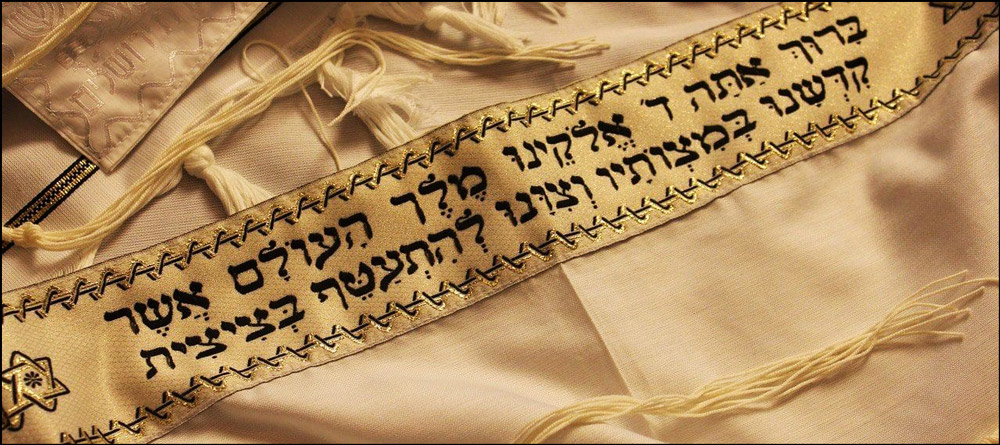
Jewish jewelry is not just a statement of fashion; it’s a rich tapestry woven with history, faith, and identity. This article invites you to embark on an enlightening journey through the world of Jewish adornments, where each piece is steeped in cultural significance and bears symbols rich in meaning. From the mystical Hamsa to the iconic Star of David, these symbols are not merely decorative; they are deeply embedded in Jewish tradition and reflect a heritage that spans millennia.
A Glimpse into Jewish Jewelry’s Heritage 📜✨
Jewish jewelry has always been more than just ornaments worn for aesthetic appeal. Historically, it represents a blend of artistic expression, religious adherence, and cultural identity. Whether crafted from humble materials or adorned with precious stones and metals, each piece carries with it a story of a people, their struggles, their faith, and their triumphs.
The Hamsa: A Symbol of Protection 🤲
The Hamsa, often depicted as an open hand, is one of the most recognizable symbols in Jewish jewelry. It transcends mere decoration, embodying protection and the fight against negative energies. This emblem, rooted in ancient traditions, is believed to offer defense against the evil eye, and it’s often worn as a talisman to safeguard the wearer.
The Star of David: An Emblem of Jewish Identity ⭐
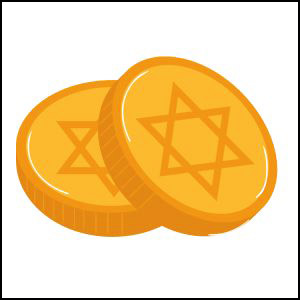
The Star of David, or Magen David, is undeniably the quintessence of Jewish symbolism. Comprising two overlaid triangles forming a hexagram, this symbol has been associated with Judaism since the 17th century. It represents more than just a religious belief; it’s a symbol of Jewish identity, resilience, and community. Found in synagogues, on the flag of Israel, and of course, in the realm of jewelry, it reflects a connection to Jewish heritage and faith that is both profound and personal.
Historical Context of Jewish Jewelry: A Journey Through Time 🕰️📜
Jewish jewelry, steeped in history and tradition, offers more than just aesthetic value – it is a tangible link to the past, revealing stories and customs of a people rich in heritage. This section explores the origins and evolution of Jewish jewelry, tracing its journey from ancient times to the present.
Unearthing the Roots: The Beginnings in Antiquity 🏺
Jewish jewelry finds its roots in ancient history, as evidenced by archaeological discoveries and historical texts. Pieces dating back to Biblical times have been unearthed, providing a fascinating glimpse into early Jewish culture. These artifacts include:
🟨 Amulets and Talismans: Used for protection and blessings, often inscribed with Hebrew texts.
🟨 Coin Jewelry: Coins featuring Jewish symbols or Hebrew inscriptions, repurposed as decorative items.
These early pieces were not just adornments; they served as amulets and symbols of faith, often used in religious rituals or as markers of identity.
The Evolution of Design: Adapting Through Centuries 🌍💫
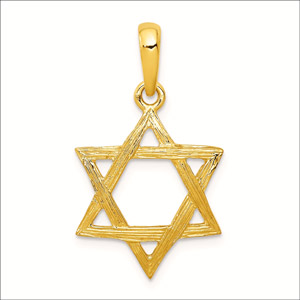
Jewish jewelry has undergone significant transformation over the centuries, mirroring the changes in Jewish communities and their circumstances. This evolution is characterized by:
🟫 Influence of Host Cultures: As Jews dispersed across different regions, local art and culture influenced jewelry designs.
🟫 Technological Advancements: New techniques in metalwork and gem cutting brought about refined and intricate designs.
🟫 Symbolic Adaptations: Symbols like the Star of David and the Hamsa became prominent in jewelry, reflecting evolving religious and cultural identities.
A Tapestry of Time: From Ancient Symbols to Modern Creations 💍🎨
The journey of Jewish jewelry is not just a linear progression but a rich tapestry interwoven with various cultural and historical threads. Key aspects include:
🟪 Cultural Integration and Preservation: How Jewish artisans incorporated elements from surrounding cultures while maintaining a distinct Jewish identity.
🟪 Religious Significance: The enduring role of jewelry in expressing and preserving Jewish religious beliefs.
🟪 Artistic Resilience: The ability of Jewish jewelry to adapt and flourish despite historical challenges faced by Jewish communities.
In summary, the historical context of Jewish jewelry is a testament to the resilience and adaptability of Jewish culture. From ancient amulets to contemporary designs, each piece is a reflection of its time, carrying with it the legacy and spirit of a rich and enduring heritage.
The Hamsa: A Symbol of Protection and Blessing 🤲✨
The Hamsa, an iconic symbol in Jewish culture, carries deep significance, offering a fascinating blend of history, spirituality, and art. This section delves into the Hamsa’s origins, its evolving designs across Jewish communities, and how it’s embraced in contemporary times.
Tracing the Roots: The Historical Significance of the Hamsa 👐
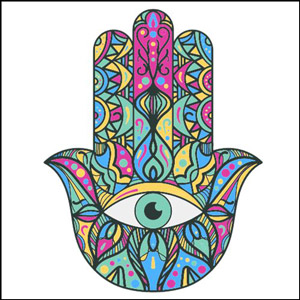
The Hamsa, often represented as an open hand, has origins shrouded in mystery and antiquity. Historically, it represents:
🔲 Ancient Symbolism: The Hamsa is believed to predate most modern religions, with roots possibly linked to ancient Mesopotamia and Egypt.
🔲 Protection Against the Evil Eye: Commonly understood as a symbol of protection, the Hamsa is thought to ward off the evil eye, a malevolent glare believed to bring misfortune.
🔲 Interfaith Connections: While prominent in Jewish culture, the Hamsa is also recognized in Islamic and Christian traditions, showcasing its cross-cultural appeal.
The Artistic Tapestry: Variations Across Communities 🎨🌍
The design of the Hamsa varies significantly across different Jewish communities, each adding its unique touch:
⬜ Ashkenazi and Sephardi Designs: Ashkenazi Jews in Eastern Europe adopted more abstract designs, while Sephardi Jews from the Mediterranean region often included more intricate, floral patterns.
⬜ Material and Craftsmanship: Variations are also seen in the materials used, from simple wooden carvings to elaborate gold and silver smithing, often studded with precious stones.
The Hamsa in Modern Context: Beyond Just Jewelry 🌟📿
Today, the Hamsa transcends its role as a mere piece of jewelry. In contemporary culture, it:
🔳 Fashion Statement: The Hamsa has been embraced as a trendy design, popular in fashion accessories beyond cultural boundaries.
🔳 Cultural Emblem: For many Jews, it continues to be a potent symbol of identity and heritage.
🔳 Adaptation in Decor and Art: The Hamsa’s imagery now graces household items, artwork, and even architectural elements, symbolizing protection and blessing.
In conclusion, the Hamsa is more than a symbol; it’s a bridge between past and present, a protector, and a beautiful expression of Jewish heritage. Its journey from an ancient emblem to a modern-day icon reflects its versatility and enduring appeal in Jewish culture and beyond.
The Star of David: Emblem of Jewish Identity ⭐✡️
The Star of David, known in Hebrew as the Magen David, stands as a powerful symbol of Jewish identity and faith. This section explores its historical roots, its profound symbolism within Jewish culture, and how it has been adapted in modern jewelry designs.
The Historical Emergence of the Star of David 📜⭐

The Star of David, with its interlocking triangles forming a hexagram, has a complex and somewhat enigmatic history:
🟡 Early Use: While the exact origins are unclear, the symbol can be traced back to medieval Jewish communities. It was initially used alongside other symbols, like the menorah, and was not universally recognized as a distinctly Jewish symbol.
🟡 Adoption in Jewish Communities: It gained prominence in the 17th century, particularly in Central Europe, becoming a representative symbol of Jewish communities and later, Zionism.
🟡 Official Emblem: It was officially adopted as part of the flag of Israel in 1948, further cementing its status as a symbol of Jewish identity and nationhood.
The Symbolism of the Star: Cultural and Spiritual Significance 🌟🕊️
The Star of David holds multifaceted significance in Jewish faith and culture:
🔵 Representation of God’s Rule: It is often seen as a symbol representing God’s dominion over the universe in all six directions: north, south, east, west, up, and down.
🔵 Kabbalistic Interpretations: In Kabbalah, the mystical branch of Judaism, the two triangles symbolize the intertwining nature of the divine and the earthly.
🔵 A Symbol of Protection: Like the Hamsa, the Star of David is also viewed as a protective talisman, guarding against evil and misfortune.
Modern Expressions: The Star of David in Contemporary Jewelry ✨💎
In modern times, the Star of David has been embraced in a variety of jewelry designs:
🟢 Fashion and Faith: It is a popular motif in necklaces, bracelets, and earrings, appealing to those who wish to express their Jewish faith stylishly.
🟢 Innovative Designs: Contemporary jewelers have reimagined the Star of David, incorporating it into modern designs, using materials ranging from classic gold and silver to unconventional elements like wood or even 3D-printed materials.
🟢 Universal Appeal: Beyond its significance in Judaism, the symbol has gained popularity globally, worn by people of various backgrounds as a sign of respect for Jewish culture or simply for its aesthetic appeal.
In summary, the Star of David is not just a symbol of Jewish identity but a beacon of faith, history, and artistic expression. Its adaptation into contemporary jewelry reflects its ability to stay relevant and cherished across generations.
Other Significant Symbols in Jewish Jewelry: Beyond the Familiar 🌟✨
Jewish culture is rich with symbols, each carrying its own unique meaning and history. Beyond the widely recognized Hamsa and Star of David, there are several other significant motifs found in Jewish jewelry, such as the Chai, mezuzah, and menorah. This section offers a brief yet insightful exploration of these symbols, uncovering their significance and representation.
The Chai: Symbol of Life and Longevity 🌿💫
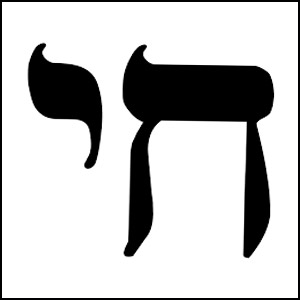
The Chai, consisting of the Hebrew letters Chet (ח) and Yud (י), represents the word for “life” in Hebrew. In Jewish tradition, it symbolizes:
🟤 Longevity and Vitality: Often given as a gift on significant occasions, the Chai is a wish for a long and fulfilling life.
🟤 Numerological Significance: In gematria, a Jewish form of numerology, the letters of Chai add up to 18, a number symbolizing good luck and life.
The Mezuzah: A Guardian at the Doorpost 🚪🛡️
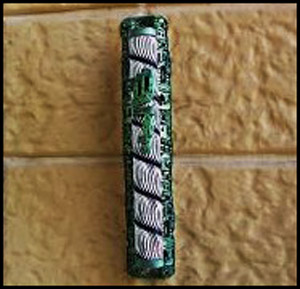
While commonly known for its place on the doorposts of Jewish homes, the mezuzah also finds its place in jewelry:
🟣 Symbol of Protection: In jewelry form, it serves as a miniature representation of this protective symbol.
🟣 Spiritual Connection: Wearing a mezuzah necklace or charm is seen as a way to keep the Torah close to the heart, symbolizing faith and devotion.
The Menorah: A Light of Tradition and History 🕎🔥
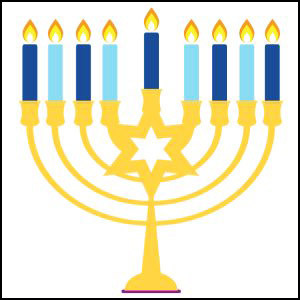
The menorah, a seven-branched candelabrum, has deep roots in Jewish history:
🔘 Historical Roots: Originally used in the ancient Temple in Jerusalem, it has become a symbol of Judaism and its long history.
🔘 Symbol of Enlightenment and Wisdom: The menorah represents the light of God and the wisdom of the Torah.
Jewelry as a Canvas for Cultural Expression 🎨📿
In Jewish jewelry, these symbols are not just decorative elements but carry profound cultural and spiritual meanings. They serve as:
🧿 Connectors to Heritage: Wearing these symbols is a way to connect with one’s Jewish heritage and community.
🧿 Artistic Expressions: Jewelers often creatively interpret these symbols, blending traditional motifs with contemporary design.
In summary, Jewish jewelry is a vibrant tapestry of symbols, each with its unique story and significance. The Chai, mezuzah, and menorah, along with others, offer a window into the rich cultural and spiritual landscape of Judaism, serving as cherished expressions of faith and identity.
Materials and Craftsmanship in Jewish Jewelry Making: A Blend of Tradition and Artistry 🎨🔨
Jewish jewelry, renowned for its beauty and significance, is not just about the symbols it represents but also about the materials and craftsmanship that go into its creation. This section delves into the traditional materials used and the evolution of artisan techniques that have shaped Jewish jewelry making.
Traditional Materials: Gold, Silver, and Gems 💍✨
Jewish jewelry has long been crafted using a variety of high-quality materials, each chosen for its beauty and durability:
- Gold and Silver: These precious metals are staples in Jewish jewelry. Gold symbolizes wealth and prosperity, while silver is often associated with purity and spirituality.
- Gems and Stones: Gemstones like diamonds, sapphires, and rubies are frequently used, each holding its own symbolic meaning. For instance, diamonds symbolize longevity and strength, while sapphires represent divine favor.
- Unique Materials: In some traditional pieces, less conventional materials like olive wood or Eilat stone (Israel’s national stone) are used, adding a unique cultural touch.
Artisan Techniques: From Ancient Craft to Modern Art 🛠️🎨
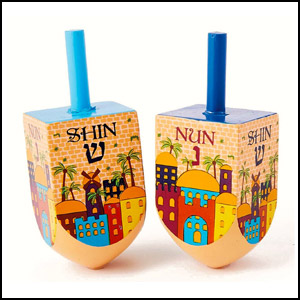
The craftsmanship in Jewish jewelry is a testament to a rich artistic heritage, evolving over centuries:
- Ancient Techniques: Historically, techniques like filigree (delicate metalwork) and engraving were popular, requiring skilled hands and a keen eye.
- Contemporary Adaptations: Today’s Jewish jewelers blend traditional methods with modern techniques, such as laser cutting and 3D printing, to create pieces that are both contemporary and deeply rooted in tradition.
- Handcrafted vs. Mass Production: While mass-produced pieces are common, there is a growing appreciation for handcrafted jewelry, with artisans often personalizing pieces to add a unique, meaningful touch.
The Evolution of Craftsmanship: Keeping Tradition Alive 🌿🔄
The evolution of Jewish jewelry craftsmanship is not just about adopting new techniques but also about preserving tradition:
- Preserving Skills: Many modern Jewish artisans are dedicated to preserving traditional techniques, passing them down through generations.
- Innovative Designs: At the same time, these artisans experiment with new styles and materials, ensuring that the craft remains relevant and appealing to contemporary audiences.
In summary, Jewish jewelry making is a fascinating blend of traditional materials like gold, silver, and gemstones, combined with both ancient and modern craftsmanship techniques. This rich tradition of artistry not only adds to the aesthetic value of the jewelry but also helps keep the cultural heritage alive, offering a tangible connection to the past while embracing the future.
Jewish Jewelry in Life’s Milestones: Celebrating Traditions and Transitions 🎉💍
Jewish jewelry plays a pivotal role in marking significant life events and milestones. From weddings to Bar and Bat Mitzvahs, these pieces are not just adornments but carry deep symbolic meanings and are integral to the celebration of these occasions. This section explores the role and importance of Jewish jewelry in various life events and the customary gifts that accompany them.
Weddings: Uniting Souls and Symbols 💑🔗
In Jewish weddings, jewelry holds special significance:
- Ketubah Signing: Often, jewelry is given as a gift during the ketubah (marriage contract) signing, symbolizing commitment and the beauty of the union.
- Ceremonial Rings: Traditional Jewish wedding rings are usually simple, unbroken gold bands, representing an unblemished and eternal union.
- The Bride’s Jewelry: Brides often wear jewelry that has been passed down through generations, symbolizing the continuity of Jewish tradition.
Bar and Bat Mitzvahs: Symbols of Coming of Age 🎓✨

When Jewish children reach the age of 12 (girls) or 13 (boys), they celebrate their Bar or Bat Mitzvah, signifying their coming of age in the Jewish community. Jewelry plays a role in this rite of passage:
- Star of David Necklaces: A popular gift, it represents the child’s connection to their faith and community.
- Chai Pendants: Symbolizing life, these are meaningful gifts that reflect the celebrant’s journey into adulthood.
- Personalized Pieces: Customized jewelry, often inscribed with the child’s Hebrew name or date of the ceremony, adds a personal touch to this milestone event.
Other Milestones: Celebrations of Faith and Heritage 🌟🎉
Jewish jewelry is also significant in other important life events:
- Baby Naming Ceremonies: Jewelry gifts, such as bracelets or pendants with the baby’s name in Hebrew, are common.
- Anniversaries and Birthdays: These occasions are often marked with Jewish-themed jewelry, celebrating both the individual and their heritage.
- Yom Kippur and Hanukkah: Gifting jewelry during these festivals symbolizes blessings, joy, and the continuity of tradition.
Jewelry: A Bridge Between the Past and Present 🌉📚
In the Jewish community, jewelry is much more than a mere accessory. It serves as:
- A Cultural Connector: Linking individuals to their history, faith, and community.
- A Storyteller: Every piece of jewelry has a story, be it a family heirloom or a new gift marking a special moment.
- A Symbol of Identity: It reflects personal and collective identities, embracing both faith and cultural heritage.
In summary, Jewish jewelry is deeply embedded in the tapestry of life’s milestones, serving as a powerful symbol of faith, tradition, and personal journey. These pieces are not only beautiful but also carry rich cultural and emotional significance, making them cherished gifts and symbols in Jewish life events.
Cultural and Fashionable Aspects of Jewish Jewelry: Tradition Meets Trend 🌟👗
Jewish jewelry, while deeply rooted in tradition and symbolism, has also made its mark in the world of contemporary fashion. It’s not just a reflection of faith and heritage but also a statement of personal style and identity in the modern world. This section explores how Jewish jewelry bridges cultural significance with modern fashion trends.
Jewish Jewelry as a Cultural Identity Statement 🆔✨
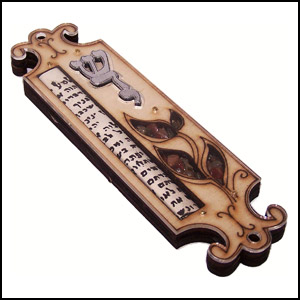
In today’s global and diverse society, Jewish jewelry serves as a powerful emblem of cultural identity:
- Personal Expression: Many people wear Jewish symbols like the Star of David or Hamsa as a proud declaration of their heritage and beliefs.
- Educational Tool: These pieces often spark conversations, serving as a means to educate others about Jewish history and traditions.
- Cultural Connection: For those in the diaspora, wearing Jewish jewelry is a way to stay connected to their roots and community.
Trends and Styles in Contemporary Jewish Jewelry 👗🔍
Jewish jewelry has evolved, embracing contemporary designs while maintaining its rich symbolism:
- Modern Takes on Classic Symbols: Designers are reimagining traditional symbols like the Menorah, Star of David, and Chai, giving them a modern twist suitable for everyday wear.
- Blending Traditions: Some contemporary designs blend Jewish symbols with elements from other cultures or fashion trends, reflecting the multicultural world we live in.
- Eco-Friendly and Sustainable Practices: There’s a growing trend towards using sustainable materials and ethical manufacturing processes in jewelry making.
Making a Fashion Statement with Jewish Jewelry 💡👚
Jewish jewelry is not just about heritage; it’s also a fashion statement:
- Accessorizing for Different Occasions: From elegant pieces for formal events to casual, everyday wear, there’s Jewish jewelry for every occasion.
- Layering and Mixing: Trendsetters often layer Jewish pendants with other necklaces or mix them with different styles of bracelets and rings for a unique look.
- Custom and Bespoke Pieces: Custom-made jewelry allows for personalization, making fashion statements that are both unique and meaningful.
Jewish Jewelry in the World of Social Media and Influencers 📱
The role of social media and influencers in popularizing Jewish jewelry is significant:
- Social Media Trends: Platforms like Instagram and Pinterest have become showcases for the latest in Jewish jewelry fashion.
- Influencers and Celebrities: When public figures and celebrities wear Jewish jewelry, they bring it into the limelight, influencing trends and preferences.
In summary, Jewish jewelry in the modern world is a blend of cultural identity and contemporary fashion. It adapts to changing trends while preserving its rich heritage, offering a unique way for individuals to express their identity, faith, and style. This dynamic evolution ensures that Jewish jewelry remains relevant and appealing in today’s fashion landscape.
Ethical Considerations and Authenticity in Jewish Jewelry ✨🌿
In an era where consumers are increasingly aware of the ethical implications of their purchases, the sourcing and production of Jewish jewelry come under scrutiny. This section delves into the importance of ethical practices in the creation of Jewish jewelry and provides practical tips for identifying authentic pieces, ensuring consumers make informed and ethical choices.
Prioritizing Ethical Sourcing and Production 🌏🤝
The journey of a piece of Jewish jewelry from raw material to a finished product is imbued with ethical considerations:
- Fair Trade Materials: Opting for jewelry made with materials sourced under fair trade practices ensures that miners and workers are treated fairly and work in safe conditions.
- Sustainable Practices: Choosing jewelers who use recycled or responsibly mined metals and gemstones helps in reducing environmental impact.
- Supporting Artisans: Purchasing from artisans and small businesses can contribute to preserving traditional craftsmanship and supporting local communities.
Identifying Authentic Jewish Jewelry: Tips and Tricks 🔍💎
With the market flooded with imitations, it’s essential to know how to identify authentic Jewish jewelry:
- Check the Hallmarks: Authentic gold and silver Jewish jewelry will have hallmarks indicating the metal’s purity, such as “925” for sterling silver.
- Research the Symbols: Familiarize yourself with traditional Jewish symbols to recognize accurate representations.
- Know the Artisans: Purchasing from reputable artisans or stores specializing in Jewish jewelry can increase the likelihood of authenticity.
- Quality of Craftsmanship: Authentic pieces generally have a higher level of craftsmanship with attention to detail.
- Ask for Documentation: For pieces with gemstones or significant value, ask for documentation or certification of authenticity.
The Rise of Eco-Friendly Jewish Jewelry 🍃💍
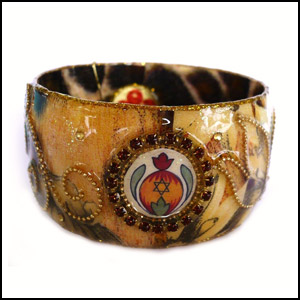
As sustainability becomes a global priority, eco-friendly Jewish jewelry is gaining popularity:
- Use of Recycled Materials: Jewelry made from recycled metals and gemstones reduces waste and environmental impact.
- Sustainable Packaging: Many jewelers now use eco-friendly packaging materials, minimizing plastic use and waste.
- Energy Efficient Production: Some jewelers ensure that their workshops or production processes are energy-efficient, reducing the carbon footprint.
The Impact of Your Choice: Beyond Aesthetics 🌟🌍
When purchasing Jewish jewelry:
- Make a Statement: Choosing ethically made Jewish jewelry is not just a fashion statement but also a declaration of your values.
- Educate Others: Sharing knowledge about ethical jewelry practices can influence others and create a wider impact.
- Preserve Traditions: Supporting authentic, traditionally-made Jewish jewelry helps in preserving cultural heritage.
In summary, understanding and considering the ethical aspects and authenticity of Jewish jewelry are crucial. As consumers, making informed choices about the jewelry we wear not only reflects our personal style but also our commitment to social responsibility.
Conclusion: Embracing the Timeless Elegance of Jewish Jewelry 🌟✨
As we reach the end of our exploration into Jewish jewelry, it’s clear that these pieces are much more than mere adornments. They are vibrant expressions of faith, culture, and identity, woven into the very fabric of Jewish history and tradition. In this conclusion, we encapsulate the essence of Jewish jewelry and invite readers to appreciate the depth and beauty inherent in these symbols.
Celebrating Cultural Heritage and Faith 🕍💖
Jewish jewelry, with its rich history and profound symbolism, serves as a powerful connector to the past:
- Living Symbols: Each piece, be it a Hamsa, Star of David, or a Chai pendant, carries with it centuries of Jewish history, stories, and traditions.
- Faith Personified: For many, these jewelry pieces are daily reminders of their faith, values, and connection to a community that spans the globe.
The Artistic and Symbolic Journey 🎨🔯
The journey of Jewish jewelry is a testament to the resilience and creativity of the Jewish people:
- Evolution of Design: From ancient artifacts to contemporary fashion statements, the evolution of Jewish jewelry design mirrors the dynamic nature of Jewish culture.
- A Symbolic Tapestry: Each symbol, whether widely recognized or less known, contributes to a rich tapestry of meaning and representation.
Beyond Ornamentation: A Fashion Statement with Purpose 💍
Jewish jewelry stands at the intersection of tradition and modernity:
- Fashion Meets Tradition: These pieces are not only culturally significant but also hold a place in the world of contemporary fashion.
- Personal and Universal Appeal: While deeply personal, Jewish jewelry also speaks a universal language of protection, blessing, and identity.
The Call to Appreciate and Preserve 🌱👐
Our journey underscores the importance of appreciating and preserving the legacy of Jewish jewelry:
- Appreciation for Artistry: Recognizing the craftsmanship and history behind each piece adds depth to our understanding and enjoyment.
- Preservation of Culture: By valuing and passing on these symbols, we play a role in preserving a rich cultural heritage for future generations.
Final Thoughts: A Legacy of Beauty and Faith 🌟❤️
In sum, Jewish jewelry is not just an accessory; it is a rich narrative of faith, history, and culture. As we wear or admire these pieces, we participate in a legacy that is both ancient and continually evolving. It’s our hope that this journey through the world of Jewish jewelry has not only informed but also inspired a deeper appreciation for these symbols that gracefully bridge past, present, and future.
References: The Foundation of Our Journey into Jewish Jewelry 📚✨
In crafting an informative and accurate exploration of Jewish jewelry, we’ve drawn upon a diverse array of sources. These references, ranging from historical texts to modern expert opinions, have enriched our understanding and provided a solid foundation for the insights shared in this article. Below is a curated list of key sources that have guided our journey.
Historical and Cultural Texts 📖🕍
“Jewish Art and Civilization” by Walden Pell II: This book offers an in-depth look into Jewish artistic traditions, including a section on ceremonial and personal jewelry.
“The History of Jewish Costume” by Alfred Rubens: Provides a historical perspective on how Jewish dress and jewelry evolved over centuries.
“A History of Jewish Crafts and Guilds” by Mark Wischnitzer: Explores the artisanal aspect of Jewish jewelry making.
Academic Journals and Articles 🎓📝
“The Journal of Jewish Art“: Several articles within this journal discuss the significance and evolution of Jewish symbols in jewelry.
“Symbolism in Judaica Jewelry” – Article in ‘Jewelry Studies’: Offers an analytical view of the symbols commonly found in Jewish jewelry.
Online Resources and Websites 🌐💡
The Israel Museum: Provides high-quality images and descriptions of ancient and modern Jewish jewelry.
Judaica WebStore Blog: Contains articles and insights on current trends in Jewish jewelry.
My Jewish Learning: A resource for understanding the cultural and religious significance of Jewish symbols like the Hamsa and Star of David.
Expert Opinions and Interviews 🧠🗣
Interviews with Judaica Jewelers: Insights from contemporary Jewish jewelry artists and designers.
Jewelry Making in the Jewish Tradition – A Talk by Eliezer Markish: A renowned jeweler discusses the artistry behind Jewish jewelry.
Multimedia Resources 🎥📸
Documentary: “The Art of Jewish Jewelry“: Offers visual insights into the craftsmanship and history behind Jewish jewelry.
YouTube Channel: “Judaica in Detail“: Features videos on the making and meaning of various Jewish jewelry pieces.
Additional References 📚➕
“Encyclopedia of Jewish Symbols” by Ellen Frankel: An essential resource for understanding the deep symbolism in Jewish jewelry.
“Traditional Jewish Jewelry” – A Compilation by the Jewish Historical Museum: A collection of essays and images showcasing historical Jewish jewelry.

